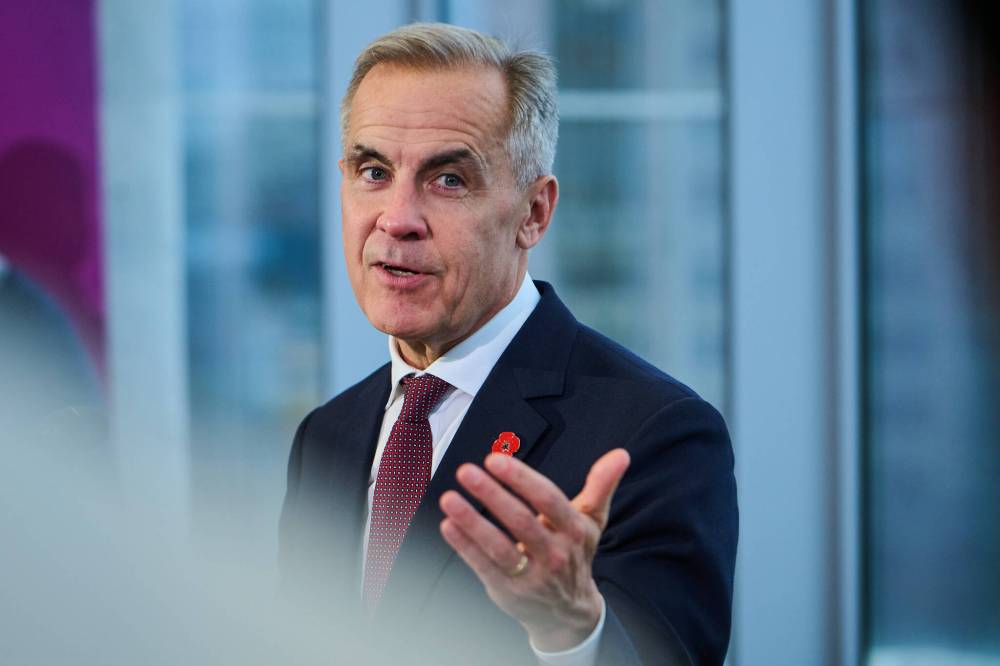Federal budget makes some health spending vanish
Advertisement
Read this article for free:
or
Already have an account? Log in here »
To continue reading, please subscribe:
Monthly Digital Subscription
$0 for the first 4 weeks*
- Enjoy unlimited reading on winnipegfreepress.com
- Read the E-Edition, our digital replica newspaper
- Access News Break, our award-winning app
- Play interactive puzzles
*No charge for 4 weeks then price increases to the regular rate of $19.00 plus GST every four weeks. Offer available to new and qualified returning subscribers only. Cancel any time.
Monthly Digital Subscription
$4.75/week*
- Enjoy unlimited reading on winnipegfreepress.com
- Read the E-Edition, our digital replica newspaper
- Access News Break, our award-winning app
- Play interactive puzzles
*Billed as $19 plus GST every four weeks. Cancel any time.
To continue reading, please subscribe:
Add Free Press access to your Brandon Sun subscription for only an additional
$1 for the first 4 weeks*
*Your next subscription payment will increase by $1.00 and you will be charged $16.99 plus GST for four weeks. After four weeks, your payment will increase to $23.99 plus GST every four weeks.
Read unlimited articles for free today:
or
Already have an account? Log in here »
The federal government’s decision not to renew a multi-year health-care agreement with the provinces amounts to a quiet — but very real — funding cut.
Dubbed “Working Together to Improve Healthcare for Canadians,” the agreement was launched in 2023. It provided provinces with targeted funding — on top of the regular Canada Health Transfer — to hire more frontline staff, reduce wait times and modernize health care technology.
For Manitoba, that translated into almost $150 million a year in additional federal funding.

THE CANADIAN PRESS/Sammy Kogan
Prime Minister Mark Carney
But nowhere in Prime Minister Mark Carney’s first federal budget did the Liberal government indicate the program will be renewed.
Which means it’s a funding cut by omission — one that couldn’t come at a worse time for hospitals and patients across the country.
For provinces like Manitoba, where emergency rooms remain overcrowded and understaffed and health-care workers are burning out, those dollars weren’t just symbolic — they were essential.
Now that money is gone.
The federal government is still expected to increase its overall Canada Health Transfer to the provinces in 2026, as it does each year.
But that modest increase will be more than offset by the loss of the targeted funding that was designed to tackle specific, urgent problems in health care.
To put it into perspective, Manitoba received $1.974 billion from the Canada Health Transfer in 2025-26. The $150-million top up may only represent a fraction of that. But it’s still a significant sum of money, especially for a province like Manitoba that continues to post large deficits and struggles to find the resources needed to pay for expensive health-care programs.
It’s easy to see how losing $150 million in health-care funding will hamper the province’s ability to hire more staff and bring down wait times.
The federal government’s argument, presumably, is that the targeted fund was always meant to be temporary — a short-term infusion to stabilize the system. But the notion that Canada’s health-care system is somehow “stabilized” in 2025 is difficult to square with reality. Temporary problems may call for temporary funding. Chronic crises do not.
Health care in Canada has become a structural challenge — one that demands sustained, predictable, and adequate funding.
Provinces need to be able to plan for recruitment, capital investment, and service expansion. That’s difficult when Ottawa treats health-care partnerships like pilot projects that can quietly expire when budgets tighten.
If the federal government wants to boast about fiscal restraint, it should be honest about where it’s cutting. By letting “Working Together” lapse, Ottawa is effectively clawing back billions that were helping provinces rebuild systems stretched to the breaking point.
The Liberal government has long claimed health care is a shared national responsibility — that no Canadian should be denied timely care because of where they live. But that principle rings hollow when the federal government unilaterally walks away from targeted funding designed to make that vision a reality.
Yes, provinces bear responsibility for how health-care dollars are spent. Some have mismanaged recruitment, failed to innovate, or dragged their feet on reforms. But Ottawa can’t demand accountability for outcomes while simultaneously reducing the means to achieve them.
Canadians are growing weary of governments pointing fingers while patients wait 10, 12, or 15 hours in emergency rooms. They want action — not accounting tricks.
Failing to renew “Working Together” is a step backward at a moment when health care needs every step forward it can get. If Ottawa truly believes in collaboration, it should sit back down with the provinces, restore the lost funding, and recommit to working together.

